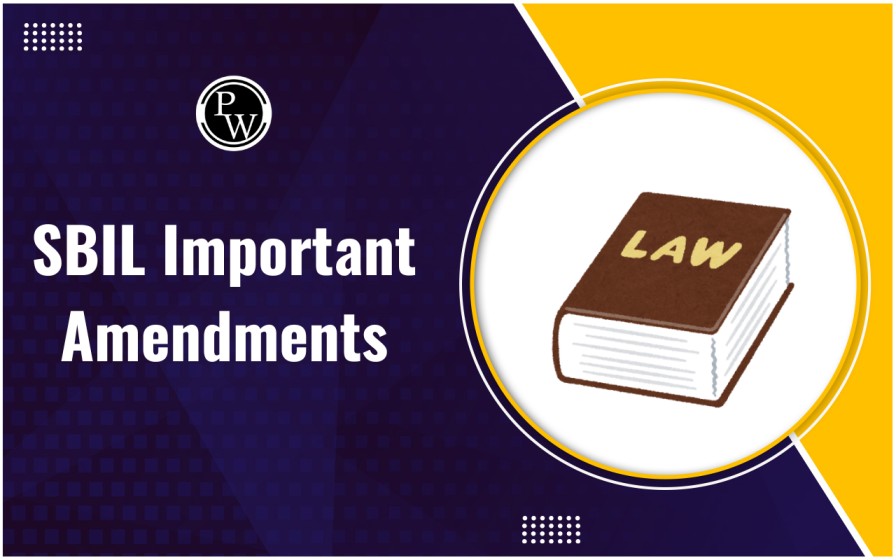
Debt Instruments: When it comes to financial planning or investment strategies, understanding debt instruments is essential. These financial tools provide a structured way for borrowers to raise capital and for investors to earn a predictable income. Whether used by governments, corporations, or individuals, debt instruments form a key part of the financial ecosystem.
This article offers a comprehensive explanation of what debt instruments are, how they are structured, their various types, benefits, associated risks, and how to choose the right one based on your financial goals.
What is a Debt Instrument?
Debt instruments are financial agreements that enable borrowers to raise funds from lenders in return for interest payments and repayment of the principal amount over a specified period. These instruments are governed by legal contracts, making them a reliable source of fixed returns for investors.
Debt instruments are commonly used by entities seeking funding without giving away ownership. They are popular for offering stability, reduced volatility, and a predictable stream of income.
These instruments are typically governed by a legal agreement detailing essential aspects such as:
- Interest payment schedule
- Maturity date
- Interest rate (fixed or floating)
- Collateral (if any)
- Covenants and terms
Debt instruments are widely recognized for their role in capital markets and personal finance.
Common Examples:
- Bonds
- Fixed Deposits (FDs)
- Certificates of Deposit (CDs)
- Debentures
- Public Provident Fund (PPF)
- Debt Mutual Funds
Structure of Debt Instruments
The structure of a debt instrument defines the terms and mechanics of the financial agreement. Key components include:
1. Principal Amount
The original sum borrowed that is to be repaid at the end of the term.
2. Interest Rate
Debt instruments offer either:
- Fixed Rate: Unchanging interest throughout the tenure.
- Floating Rate: Varies based on market benchmarks such as repo rate or MCLR.
3. Maturity Period
Time duration after which the principal is repaid. Debt instruments can be:
- Short-term (up to 1 year)
- Medium-term (1 to 5 years)
- Long-term (more than 5 years)
4. Collateral
Some instruments are backed by collateral, enhancing security for the lender. Secured debt reduces the risk in case of borrower default.
5. Repayment Terms
These define how and when the borrower will pay interest and principal. It could be:
-
Periodic payments (monthly, quarterly, yearly)
-
Lump-sum payment at maturity
6. Covenants
Specific conditions that both parties must adhere to, such as maintaining financial ratios or restricting additional borrowing.
Types of Debt Instruments
Debt instruments are available in several forms, each designed to cater to different financial goals, timelines, and risk profiles. The most common ones are:
1. Government Bonds
Issued by central or state governments, these bonds are among the most trusted financial instruments. They help fund public infrastructure and development projects.
Key Features:
- Fixed or variable interest
- Tax benefits on certain instruments
- Maturity ranging from short-term (like Treasury Bills) to long-term
2. Corporate Bonds
Corporations issue these to raise capital for business operations or new projects. They usually offer higher returns than government bonds but involve greater risk.
Key Features:
- Based on the credit rating of the issuing company
- Offer fixed interest payouts
- Suitable for medium to long-term investment
3. Fixed Deposits (FDs)
Offered by banks, NBFCs, and post offices, FDs provide fixed returns for a chosen tenure.
Key Features:
- Guaranteed returns
- Tenure flexibility (from a few days to several years)
- Tax-saving options available under certain schemes
4. Certificates of Deposit (CDs)
Short-term, low-risk instruments issued by banks, ideal for investors looking for a short investment horizon.
Key Features:
- High liquidity
- Fixed return with short maturity (generally up to 1 year)
- Minimum investment thresholds may apply
5. Debentures
These are unsecured instruments issued by companies without any collateral backing. Returns are higher, but so is the risk.
Key Features:
- Based on issuer’s creditworthiness
- Suitable for medium to long durations
- Offers higher interest compared to secured instruments
6. Debt Mutual Funds
These funds invest in a diversified basket of fixed-income securities such as bonds and T-bills. Managed by professionals, they are ideal for investors seeking stable growth with relatively lower risk.
Key Features:
- Diversification
- Regular income through interest
- Liquidity compared to direct bond investment
Benefits of Investing in Debt Instruments
Investors are drawn to debt instruments for several compelling reasons:Stability and Predictable Returns
Debt instruments offer steady, predictable returns through fixed-interest payments, making them ideal for risk-averse investors. They are less volatile than equities, providing a reliable income stream even during market downturns. Instruments like government bonds ensure capital safety due to sovereign backing, ensuring financial stability.Portfolio Diversification
Debt instruments balance the risks associated with volatile equity markets. Including bonds, fixed deposits, or debt mutual funds in a portfolio reduces overall risk. Their lower sensitivity to market fluctuations ensures consistent returns, enabling investors to maintain stability while pursuing growth through higher-risk assets.Legal Protection
Debt investors have legal safeguards. In cases of liquidation, bondholders are prioritized over shareholders during asset distribution. Secured debt instruments are backed by collateral, ensuring repayment even in default scenarios. Contractual terms mandate fixed payments, providing assurance and security to the investors.Tax Benefits
Debt instruments like tax-saving fixed deposits, PPF, and sovereign bonds offer significant tax advantages. PPF provides triple tax exemptions on investment, interest, and maturity. Indexed tax benefits on long-term debt mutual funds and tax-free bonds further enhance post-tax returns, making them tax-efficient options for investors.Read Also: Easy Tips to Memorize CS December 2024 Syllabus
Risks Associated with Debt Instruments
Despite their benefits, debt instruments are not without risks:Credit Risk
Credit risk arises when the borrower fails to meet their financial obligations, such as interest or principal repayments. This is more common in corporate bonds or debentures issued by entities with low credit ratings. Investors must assess the issuer’s creditworthiness before investing.Interest Rate Risk
Fixed-rate debt instruments are vulnerable to changes in market interest rates. When interest rates rise, the value of existing fixed-rate instruments declines, as newer instruments offer higher returns. This risk particularly affects long-term bonds and fixed deposits.Liquidity Risk
Liquidity risk occurs when an investor struggles to sell or convert a debt instrument into cash without incurring significant losses. This is common with less-traded instruments like corporate bonds or debentures that lack an active secondary market.Reinvestment Risk
Reinvestment risk emerges when investors receive cash flows (like interest or principal repayments) and cannot reinvest them at comparable rates of return. This is particularly relevant during periods of declining interest rates, impacting the overall investment yield.Role of Credit Ratings
Credit ratings are critical in assessing the risk associated with debt instruments, helping investors evaluate the issuer’s creditworthiness. Ratings range from AAA (highest safety) to D (default). Instruments with higher ratings offer lower risks but may yield lower returns, while lower-rated instruments provide higher returns with greater risk. These ratings, provided by agencies like CRISIL, CARE, and ICRA, impact investor confidence and debt instrument valuations. Higher-rated instruments attract more demand, reducing their yields, while lower-rated instruments compensate with higher yields. Investors use ratings to align investments with their risk tolerance and goals. However, ratings should be considered alongside market conditions and issuer fundamentals for well-informed, balanced investment decisions.Steps to Choose the Right Debt Instrument
Selecting the right debt instrument depends on factors such as:Investment Horizon
Your investment timeline significantly impacts the selection process.- Short-Term Goals: For needs spanning a few months to a couple of years, options like Certificates of Deposit (CDs), Fixed Deposits (FDs), and Treasury Bills are ideal. These instruments provide liquidity and stable returns with minimal risk.
- Long-Term Goals: For objectives like retirement planning or building a large corpus, instruments such as the Public Provident Fund (PPF), government bonds, and long-term corporate bonds are better suited due to their higher returns over extended periods.
Risk Tolerance
The level of risk you are willing to accept influences the choice of instruments:- Low-Risk Tolerance: Conservative investors should focus on government bonds, PPF, or insured FDs, which offer safety and predictable returns.
- Moderate to High-Risk Tolerance: Investors comfortable with moderate risk can explore corporate bonds and debt mutual funds, which offer higher returns but are subject to credit and market risks.
Return Expectations
The desired level of return often requires a trade-off between risk and reward:- Stable, Low Returns: Instruments like FDs and government bonds ensure consistent income but with limited growth potential.
- Higher Returns: If higher yields are the goal, instruments like high-yield corporate bonds, debentures, or dynamic bond funds may be appropriate, though these come with greater risk
Debt instruments are indispensable in the financial ecosystem, serving both as a tool for raising funds and as a reliable investment option. They cater to a diverse range of financial needs, offering stability, predictable returns, and tax advantages. However, like all investments, they require careful analysis of associated risks, credit ratings, and personal financial goals. Whether you are an individual investor seeking to secure your savings or an institution looking to diversify your portfolio, debt instruments can provide a balanced approach to achieving financial stability and growth. With informed decision-making, they can become a cornerstone of your financial strategy.
What is a Debt Instrument: Definition, Structure and Types FAQs
Can I sell debt instruments before maturity?
What are secured and unsecured debt instruments?
Who issues debt instruments?
How do credit ratings affect debt instruments?
What is a debt mutual fund?










